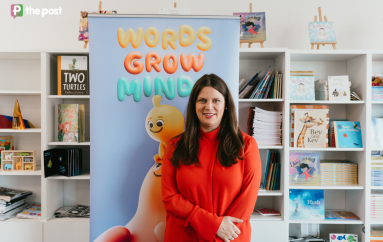South Australian tourism operators grapple with skills shortage
South Australia’s regional tourism operators are in need of hospitality staff, tour guides, coach drivers and more, as the state’s tourism industry continues to rebuild from the pandemic.

The Murray Princess paddle steamer is in need of hospitality staff for its cruises out of Mannum.
Fancy working as a cruise director on a paddle steamer, a chef in Vivonne Bay, a barista on Granite Island or as an adventure tour guide on Kangaroo Island’s wild south coast?
These are just some of the more than 800 jobs listed online for hospitality and tourism in South Australia.
The most in-demand region outside of Adelaide is the Barossa, for which more than 60 jobs are listed on seek.com.au.
Among the many vacancies, National Parks and Wildlife are looking for staff to operate the soon-to-reopen Granite Island Cafe at Victor Harbor, Ikara Wilpena Pound Resort is advertising for food and beverage staff and Kangaroo Island Outdoor Action is looking for an eco-adventure tour guide.
While there are many options for job seekers, prolonged staff shortages across the industry are continuing to prove a challenge for businesses.
SeaLink has vacant roles across its brands, which include tour business Kangaroo Island Odysseys and the Murray Princess – the largest inland paddle wheeler in the Southern Hemisphere.
SeaLink General Manager South Australia Tracy Croft says the organisation currently has 35 vacant positions out of a total workforce of 250.
“When COVID started to hit, we lost many guides and coach drivers that were here from overseas,” says Croft.
“Now, coupled with this tourism resurgence, our bookings are very solid but, from an employment aspect, the staffing doesn’t match that.
“We’ve had to pivot with our offerings, but we’ve been working with industry partners to ensure a great experience for the passengers and guests,” she says.
Croft says forward bookings for the Murray Princess are very strong with some cruises having already sold out into 2023.
The strong demand is driven by domestic travellers, with the paddle steamer’s international passengers comprising less than 2 per cent of guests – down from almost 13 per cent pre-COVID.
The paddle steamer offers multi-day cruises with premium hospitality offerings on board.
Given the organisation’s size, it has been able to pull staff from other areas of its business to cover shortages.
“Because the river is flowing so well, domestic tourism is buoyant,” says Croft.
“Your crew does become family when you’re in close quarters working with them, and you have that opportunity to really develop a relationship with the guests.
“You’re providing more than just food and beverage, you become part of their whole experience.”
SeaLink is also seeking guides for its Kangaroo Island Odysseys tours. The company is willing to facilitate upskilling to secure the right employees.
“A win for us is finding someone who’s passionate about SA and has the skills to be a great guide,” says Croft.
More than 90 per cent of tourism businesses are small operators, many of whom are currently under pressure to deliver services.
With the volatility of what we’ve seen over the last couple of years, tourism businesses have been arguably hardest hit
The Tourism Industry Council of South Australia (TICSA) chief executive officer Shaun de Bruyn says the pandemic forced many workers to leave the industry.
“Unfortunately, with the volatility of what we’ve seen over the last couple of years, tourism businesses have been arguably hardest hit, and their staff and workers have sought other opportunities to work and earn a living,” says de Bruyn.
“Many people have gone into other industry sectors, be it mining, defence, construction and real estate.
“We now need those people back, and more, to deliver visitor experiences across the state.”
De Bruyn says tourism and hospitality careers could be better promoted.
“We need young people to see our industry as not only a great place to have a job, but also build a career,” he says.
“Tourism is a great place to build a career but the perception isn’t as strong as it needs to be for the future.”
He commended the Federal Government for increasing the amount pensioners can earn before their pension is reduced, which could allow them to work in the industry.
He would also welcome a change to the Federal Government’s Working Holiday Maker program.
Currently, international visa holders can apply for the second year of their visa if they work for three months in certain sectors such as tourism in remote Australia.
“We’d like that to be broadened out to tourism and hospitality businesses in a regional area – I believe that would be a good policy shift,” says de Bruyn.
“Obviously, there’s a significant backload of visa processing but there are opportunities to get more working holiday people here quicker, potentially lift the age limit and even allow them to be able to do a third year on their working holiday visa.”




